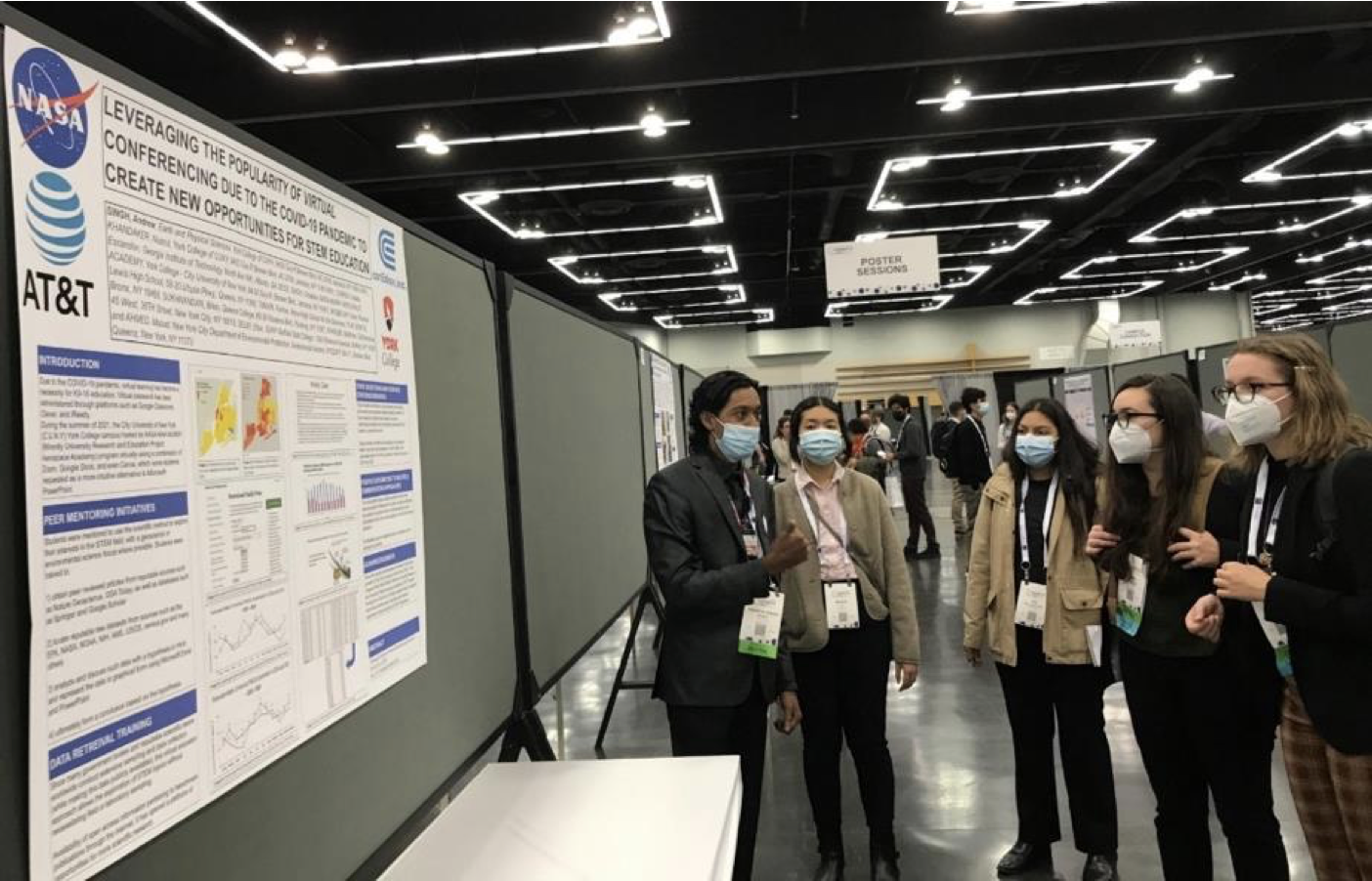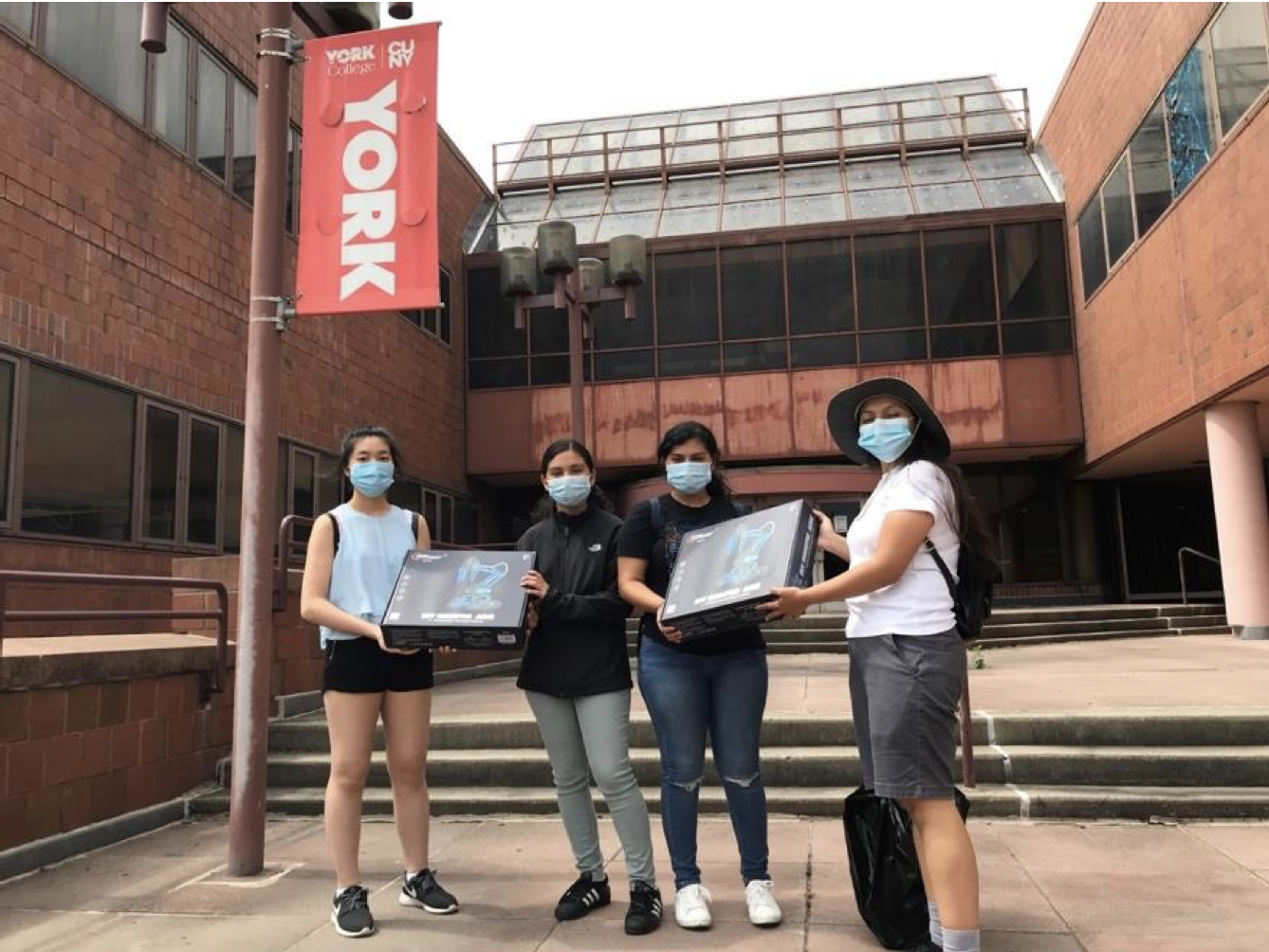York Hosted NASA STEM Served Over 30,000
CUNY York College hosted NASA STEM Outreach Program Graduates Over 30,000 Students, the legacy continues amidst the COVID-19 Pandemic
The NASA MUREP (Minority University Research and Education Project) and SEMAA (Science, Engineering, Mathematics and Aerospace Academy) at York College CUNY (City University of New York), the borough of Queens, New York City, recently earned a distinction by graduating over 30,000 underrepresented minority students (K1-12) since 1999 with the culmination of the fall 2021 session! African American students are leading the graduates, followed by Hispanic and Asian students being almost equal in proportion. The primary objective of both MAA (MUREP Aerospace Academy) and SEMAA is getting underrepresented minority students exposed to innovative STEM content and preparing many of them to enter higher education with a STEM focus.
The diligent and successful collaboration between Congressman Gregory Meeks and Professor Jack Schlein (now emeritus professor, York College) made York a legacy STEM Outreach site. SEMAA was introduced to the community in 1999 and continued until 2015, replaced by the MAA program in 2015.
Aside from NASA’s pivotal support, timely funding from AT&T and ConEdison played a significant role in bringing experiential learning tools and much-needed training for the participants, particularly in overcoming learning loss during the pandemic. Of particular importance to this outstanding accomplishment were the well-coordinated program plans and their execution, which were ably handled by the MAA staff, family focus groups, and stakeholders. The COVID-19 pandemic forced the program to switch from being solely in-person to virtual since mid-March 2020. Prior to mid-March 2020, class offerings inside the York College campus were hands-on and focused on teamwork. To accept the “New Normal” MAA staff worked very hard and heavily relied on virtual dissemination of STEM content to the students. Grade-appropriate interactive online STEM lessons from the NASA Jet Propulsion Laboratory (JPL), NASA Online Educators Network (NEON), Civil Air Patrol, and American Museum of Natural History (AMNH) became valuable sources and teachers built lessons for the students. Students at their home setting used easily available ordinary materials such as papers, scissors, scotch tape, clips, toothpicks, cardboard, colored pencils, batteries, etc. to build rockets, telescopes, planes, bridges, and electric circuits.
Parents assisted elementary grade students to follow guidelines, assembling materials, and completing assigned tasks. Being directly involved with students, parents, and caregivers - many of whom are first-generation immigrants - noticed the richness of the NASA STEM lessons and greatly appreciated teachers’ willingness, ability to reach out, and encouragement towards students learning. Often parents communicated positively as to the content delivery. This direct partnership is very crucial to the program, which was not as in existence during in-person offerings.
In a few cases, students were given STEM kits to take home and conduct experiments – mostly for high school grades. To further promote group learning, representative high school students were selected to receive peer mentoring, an initiative that was supplemented with additional funding from AT&T and ConEdison. A small cohort of high school students conducted research on robotics, NASA Artemis-related science content, space exploration, astrobiology, etc., and presented at the annual meeting of the Geological Society of America (GSA). Currently, the peer-mentoring initiative is becoming quite attractive and MAA is continuing to build a new cohort of students to present at the annual meeting of the GSA to be held in Denver, October 10, 2022. Previous student presenters were very satisfied to have this opportunity made available for them and commented “ Thank you for introducing the opportunity of GSA Connects 2020, I was able to meet a variety of people as well as
catch a glimpse at posters from other presenters. Didn’t realize about professionals can be so helpful and full of encouragement.” Violeta Scandon (now attending Georgia Institute of Technology).
The latest pedagogical effort is centered on teaching middle to high school students about programming languages using python. Knowledge of python was applied to build and control robots movements. Participating students often continued their robot-building activities after the regular STEM session and communicated with teammates to make sure the final assembly of all the components are interconnected and ready to initiate movement or liftoff. This way, involved students experienced the potential applications for the language and learned to resolve technical issues with engineering design and outcome.
The program being mostly Saturday mornings (fall and spring sessions) and weekdays (summer sessions) was suitable for many kids to attend the K1-12 program. Almost every public school in New York City offered an online session to the students during the initial stage of COVID-19 and many students received an iPad or laptop to attend classes through Google Classroom, Zoom, and WebEx. MAA students, for the most part, had the electronic tools to log on, listen to teachers and retrieve additional relevant web content to complete assignments.
As an added STEM exposure, AT&T invited representative high school grade students to virtually attend the NEWLAB, located in Brooklyn (New York), which is home to over 800 engineers, inventors, and entrepreneurs; they are constantly utilizing transformative and frontier technology to solve the world’s biggest challenges with leaders and experts across industries and megacities. It is equipped with a 3D printing facility, hydroponic garden, electric transportation hub, green energy, and leveraging 5G network – tailored to educate students to appreciate the way technology is rapidly evolving and potentially open up new job opportunities. Visitation to the NEWLAB enabled students to observe new inventions, and certainly get motivated to seek out summer internships and diversify their technical skills.
Success Stories
Several participants from the MAA and SEMAA programs are the beneficiaries of NASA STEM education and eloquently expressed their satisfaction by saying “it was a trigger and sparked an interest to value science, mathematics, and engineering – eventually magnetized to choose STEM disciplines and become professionals.” Sol De Leon (now attending CUNY Hunter College)
A few notable students are Sandi Wills (Ph.D. in immunology, Duke University), Jasmin Budhan (Tufts University), Matthew Khargie (CoEnterprise, Senior Analyst), and Juan Pablo Rodriguez (Robotics Engineer at Honeybee Robotics). A handful of recent MAA participants are now attending Columbia University, New York University (Tandon School of Engineering), Cornell University, Rochester Institute of Technology, CUNY Macaulay Honors College, Georgia Institute of Technology, Stony Brook University, and Northeastern University.
Broadening Participation of MAA and SEMAA Graduates
The success and longevity of the NASA STEM Program at York College are largely owed to loyal, passionate, and supportive graduates and members of the family focus group. It has been a tradition here at York campus to notice former participants coming back to assist teachers or join as pre-service teachers or regular teachers. Attending students feel very comfortable with returning individuals; likewise, former participants find themselves to be in their shoes and giving students a sense of belonging. Knowledge transformation becomes very effective as attending students notice a great deal of passion, keenness, and comfort from their predecessors.

York MAA at the GSA annual conference. Andrew Singh (preservice teacher) is explaining to visitors the way the program attracted students to conduct research using virtual platforms and take-home STEM kits.
MAA high school students are receiving robot kits from Melanie (far left) and Sol (far right) to conduct python-based research in their respective home settings.


